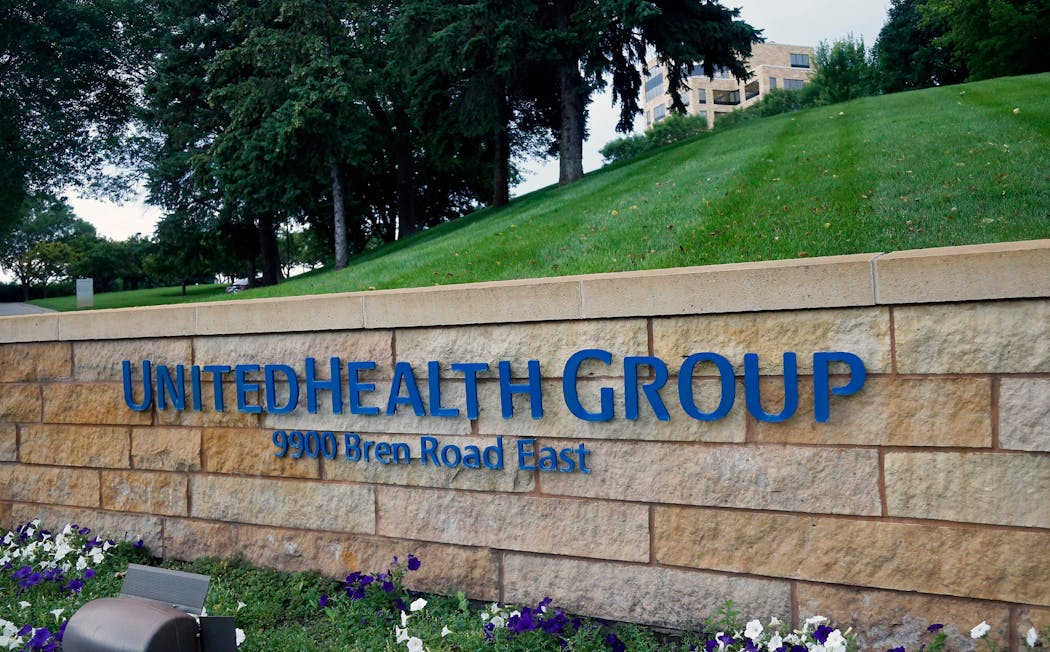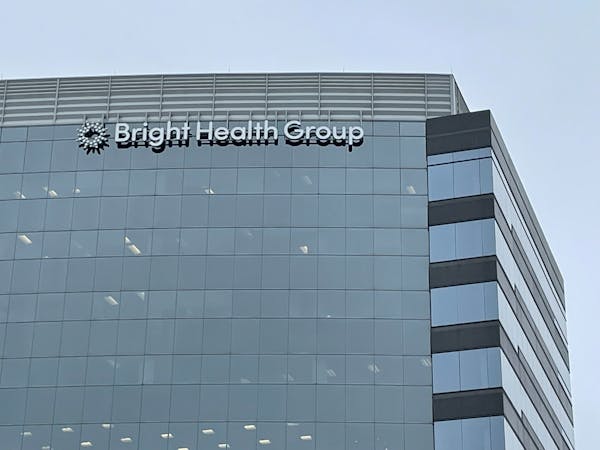A rising number of reverse stock splits has prompted the Nasdaq stock exchange to rein in the practice by requiring more advanced shareholder notice.
Companies most often use a reverse stock split to raise the price of their shares in order to maintain their listing on the Nasdaq or New York Stock Exchange. Both exchanges can remove a company if the share price persistently trades below $1 — a problem several Minnesota companies have faced this year.
Bright Health Group, Foxo Technologies and Regis Corp. have all completed reverse stock splits in part to bring stock prices back into compliance.
The number of reverse splits has risen sharply around the country. In 2020, 94 companies announced reverse stock splits, which jumped to 196 in 2022 and to 164 halfway through 2023 — with more anticipated in the second half of the year.
In its notice to the Securities and Exchange Commission, Nasdaq stated that companies listed on its main exchange are mostly doing reverse splits to "to achieve compliance with Nasdaq's $1 bid price requirement."
Getting delisted from a major exchange can create compounding problems for a company. Some institutional investors may have rules against buying or even holding companies that are not on a major exchange. That greatly reduces the number of potential shareholders and the heights a stock price might reach.
Regis trades on the NYSE and has been trading under $1 since September. Regis announced a 1-for-20 reverse split on Nov. 17 that became effective on Nov. 29 to regain compliance with NYSE standards. On Wednesday the stock was trading about $9 per share, but the company is still out of compliance with other NYSE rules on market capitalization and stockholders' equity.
"The reverse stock split is primarily intended to bring the company into compliance with stock exchange minimum bid price requirements while we explore opportunities to remain listed on a national securities exchange," said Kersten Zupfer, chief financial officer of Regis Corp. "The reverse stock split is not expected to have a direct impact on the company's market capitalization deficiency."
On Dec. 15 Regis said the company was appealing an NYSE decision to commence delisting based on the those factors while saying they have plans to "evaluate all listing options."
The company had already stated Nov. 1 it would "review strategic alternatives," which could include selling the company outright.
Earlier this year, Bright Health did a reverse split to cure its own sub-$1 stock price.
Bright Health went public on June 23, 2021. They priced their IPO at $18 a share, but by early 2023 the price had persistently traded below $1 and they had been given notice they could be delisted.
On May 22 the company commenced a 1-for-80 stock split. That move reset Bright Health's price around $15 per share.
A split doesn't change the value of the company, and it doesn't guarantee the stock will grow. Bright Health's shares continued to drop after the reverse split, but shares have leveled out around $6.50.
Struggling Foxo Technologies did a 1-for-10 reverse stock split on Nov. 7 and has more work to do beyond adjusting the share price. Interim CEO Mike White said in the split announcement that they were concentrating on restructuring the business.
On Dec. 19 the company announced it received a noncompliance notice from NYSE for filing quarterly results late.
Forward stock splits once used to be more common.
Stock traders generally trade shares in lots of 100, which meant that individuals had to buy multiple shares. To make shares more affordable for individual or retail investors, it made sense for a company to periodically do a 2-for-1 or 3-for-1 stock split that had the effect of reducing the share price to an affordable range, generally below $100 a share.
Berkshire Hathaway's Class A shares have famously never had a stock split and today the shares trade for $540,000. The Class B shares have only had one split, a 50-for-1 in 2010.
The split decline may be due to the Berkshire influence, but it has also become easier for retail investors to buy individual shares or even partial shares through brokers like Robinhood, Charles Schwab and numerous other places.
Just five Minnesota public companies have had a forward stock split since 2018. The last was Minneapolis-based Bio-Techne, which announced a 4-for-1 split in November 2022. Shares were trading over $300 a share and the company said it wanted "to make stock ownership more accessible to employees and investors."
UnitedHealth Group has the highest price among Minnesota stocks. UHG has completed five stock splits since 1992 but none since a May 2005 split gave shareholders two shares for every one they owned, cutting the price from around $100 to $50. The company hasn't had a split since then as the stock moved from $100 to around $550 a share.
Today, institutional shareholders own more shares than retail investors do in nearly all public companies, disincentivizing splits. To large institutional shareholders with billions of dollars to move around, it makes little difference if a stock is priced in the $10 to $50 dollar range or in the $100 to $500 range.
Then there are costs for stock splits, including notifying shareholders and potentially distributing more shareholder materials. Some companies would rather spend that money elsewhere.
Winmark CEO Brett Heffes says his company, a franchiser of resale stores like Play it Again Sports and Plato's Closet, evaluates all capital moves that are available but hasn't given a lot of consideration to a stock split.
"We prefer to focus on value-creating capital allocation strategies," Heffes said. "And for us that's strategic transactions that pay down debt, stock buybacks or dividends."

Minnesota Department of Health rescinds health worker layoffs

Eco-friendly house on 30 acres near Marine on St. Croix listed at $1.6M

DOGE cuts federal money for upgrades at Velveeta plant in New Ulm




